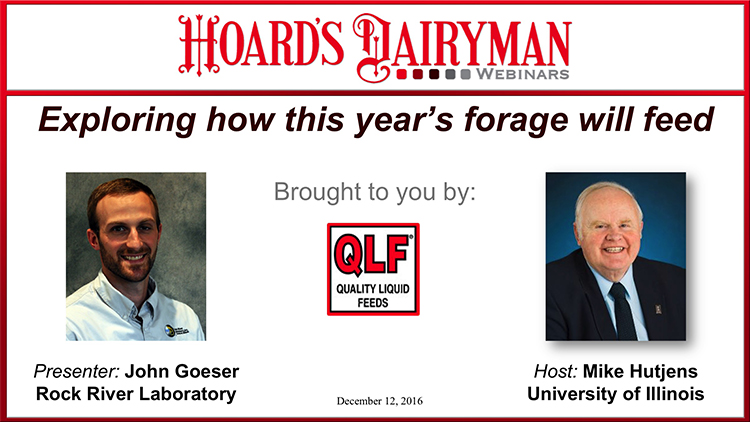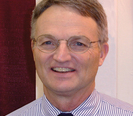
“Exploring how this year’s forage will feed” was presented by John Goeser of Rock River Laboratory. With advanced education in both agronomy and dairy cattle nutrition, Goeser is well versed evaluating feed quality.
The 2016 corn silage crop looks to have lower fiber, which in turn will mean more energy will be available in the forage. This trend may be due to higher levels of BMR corn grown.
Forage testing labs conduct a wide variety of tests. Goeser cautions not to rely too heavily on Relative Feed Value (RFV), but instead use Relative Forage Quality (RFQ), a more accurate measure of fiber.
Weather clearly plays a role. Growers in western New York and western Pennsylvania experienced a drought last summer, which resulted in drought-stressed corn. It appears to provide more energy than normal.
A wet fall in the Upper Midwest delayed corn silage harvest in some areas. Moisture levels got too low for good ensiling in some cases.
With the West’s more consistent weather and scheduled use of irrigation, corn silage tests there showed more consistent patterns throughout.
Some may be anxious to feed the new forage, but Goeser recommends 90 days for freshly cut corn silage to ferment in order to reach its full potential. This is not always possible, of course. However, it was fairly easy to spot when changes from the 2016 to 2017 feeds occurred since cows are a great barometer of change.
All the effort that goes into growing crops and the time invested can be robbed by molds and yeast. Goeser has noticed an upward trend in the amount of Zearalenone
(ZEA), vomitoxin (VOM), and T2 in forage tests.
He also cautioned those feeding dried distillers grains and corn gluten feed especially to be on the look out for higher mycotoxin levels in these corn by-products.
Corn silage is 50 percent genetics and 50 percent management, he theorized. For optimal results, both portions need the proper attention.
Multiple data charts including forage tests from 2016 forages are included in the recorded presentation, as well as more in-depth discussion of this year’s feed.
QLF sponsored the webinar and it can be found here.
To sign up for the webinar series, click this link.
Next month’s topic:

Jeff Stevenson, Kansas State University, presents “A reproductive update" on January 9, 2017. Should you be tweaking your reproductive program to improve efficiency? What about utilizing heat detection and activity monitoring technologies on your farm? He will provide some updates and ideas for getting cows pregnant. The January webinar is brought to you by Parnell.

The author is the online media manager and is responsible for the website, webinars, and social media. A graduate of Modesto Junior College and Fresno State, she was raised on a California dairy and frequently blogs on youth programs and consumer issues.








